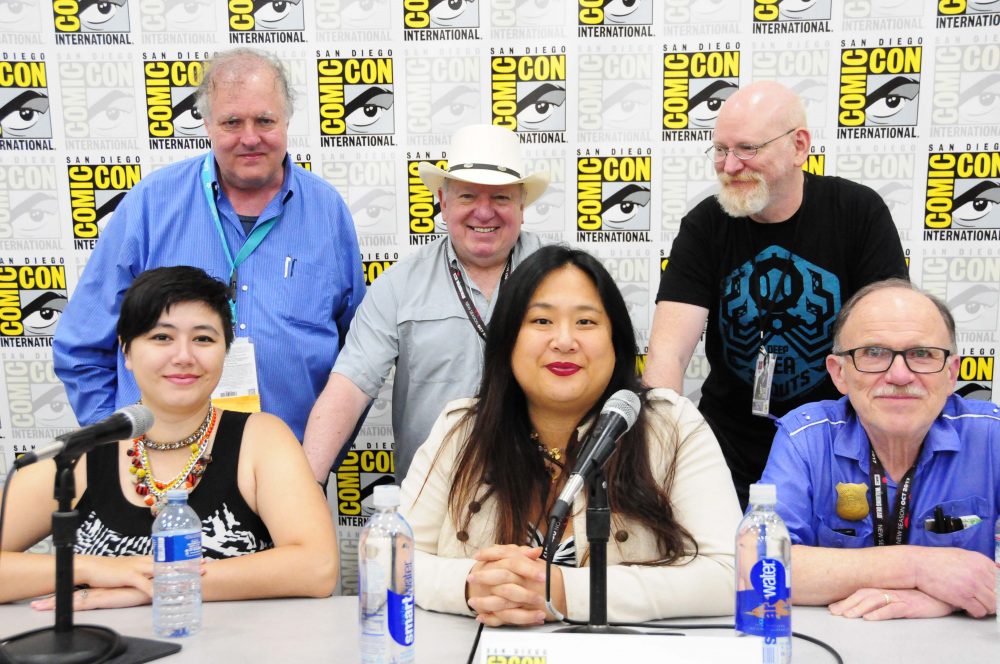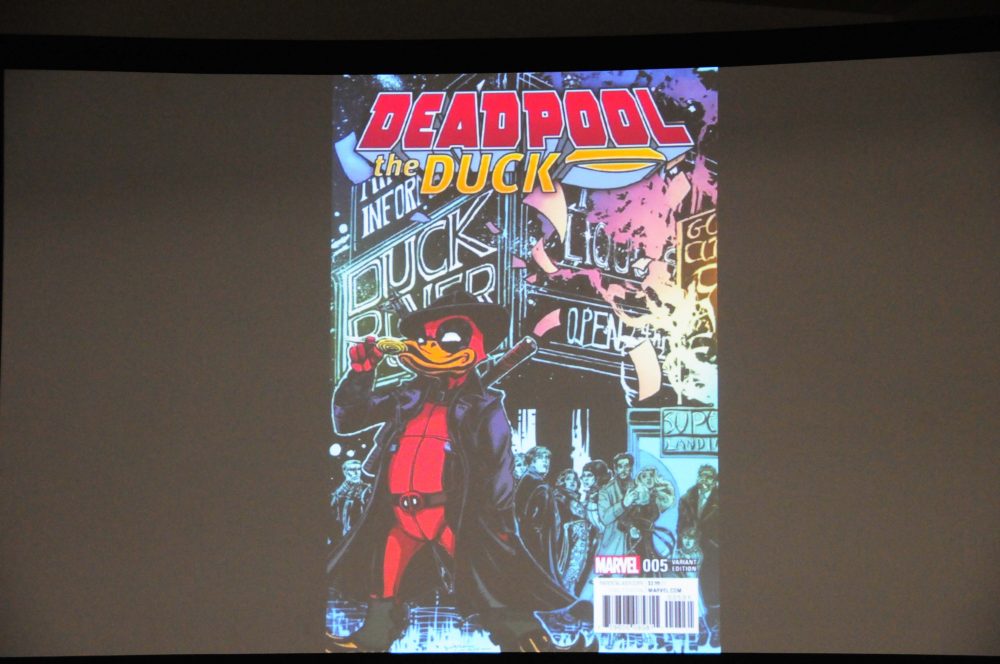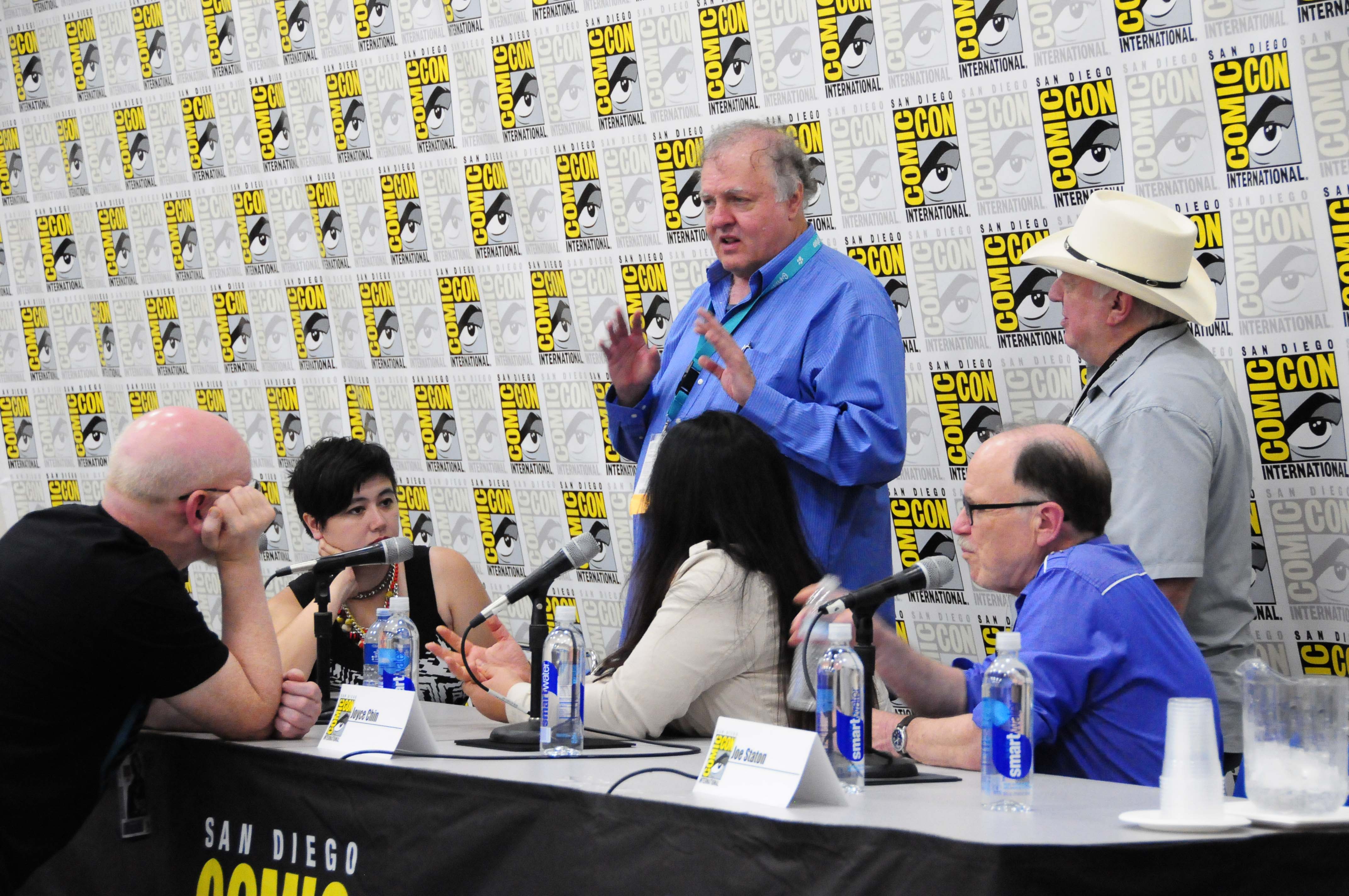
The phrase goes, “Don’t judge a book by its cover.” I don’t know anyone who follows it. For that reason, an eye-catching cover is necessary to catch the eyes of potential buyers. At this year’s San Diego Comic-Con, Mark Evanier (Jack Kirby historian and a comic legend in his own right) collected five comic book artists to discuss what it takes to have a dynamic cover.
This year’s panel was comprised of Mike Grell, Erica Henderson, Arthur Adams, Joyce Chin, and Joe Staton. Getting the ball rolling, Evanier wasted no time in asking artist Mike Grell what he felt made for a successful cover. Grell, who Mark Evanier remarked had his head down because he was drawing a commission of “Cosmic Boy” in a black bustier, said that, “I usually get the idea for the cover from the middle, between the story and the drawing… I try to get it to look like a movie one-sheet to attract the reader to pick it up.”
Joyce Chin, who has so far worked with Marvel for two-and-a-half years, said she herself does a lot of variant covers. Sometimes for whatever reason, the cover art artist will be different from the person who did the interiors. This scenario is most often the case when a comic has a variant cover done. Evanier asked her if she typically had to match the interior art when doing variant covers. “I feel like when I’m doing a cover, that they expect them to be different,” said Chin. “So, I just do them differently, and they pay me.
Deadlines can really shape what cover is eventually chosen and made, explained Arthur Adams with some irk. He also lamented that, “I try to give sometimes two to three… sometimes four to six batches of cover sketches to choose from. Eighty-percent of the time they choose the ones I don’t like.” A common woe to most cover artists who aren’t involved with the interiors is that they have no idea what the stories are, relying on direction from writers or marketing. This was the case for Mike Grell when he was asked to draw a cover with Green Arrow and Black Canary on it. “I was told that they wanted them in front of a wall of fire, fighting,” said Grell. “So, I draw Green Arrow on the floor, with an arrow pointed up and drawn back, and Canary jumping through the flames. And when I show them what I did, they said, ‘No, no! We meant they’re yelling at each other, having an argument with the fire behind them.”

Similarly, Joyce Chin said she often has no idea what the story line of the comic is. All she is told is usually the characters and the comic’s title. “They’ll say to me, ‘It’s this, and this, and this character. GO!’ So, I just make stuff up.” As was the case with the variant cover for Deadpool the Duck that she was asked to do. “I didn’t even know Deadpool Duck was a thing,” she said. “So I asked if I could go with a noire, detective theme, and they just said ‘Sure’… I have no idea to this day what happened on the inside. Whatever, I got paid.” For Joe Staton, who usually does both the cover and interiors of comics, he said, “If I’m lucky, maybe halfway through I’ll pick up on a them and go with it.
To end the panel, Mark Evanier chose to put on display five-covers each of the artists’ various works, having only the artists who did them critique their own work. Not surprisingly, many of them groaned when their own images came up, typically groaning “deadlines” or “It’s okay, I guess.” A typical remark however was the use of color that were used on their work. Many of the artists said they didn’t do the coloring and didn’t know who did. “I’m not sure who did the coloring here, but I just don’t like the color choices… It changed the tone of what I was going for,” said many of them. This goes to show that having a relationship and being in communication with the colorist is important if an artist wishes to preserve their original vision.
In the end, between colorists, a lack of information, direction from someone in the publication, or most likely deadlines, an artist typically doesn’t have complete control of what a cover’s final product will turn out. But one of the great things of real artists is that they can work with the pressure and still make a diamond.








Art and Mike are both great. Art’s pin ups are always great quality.
Comments are closed.